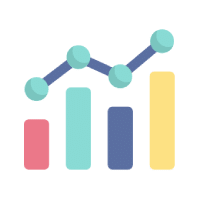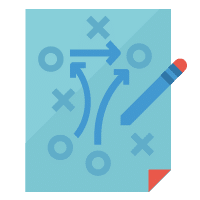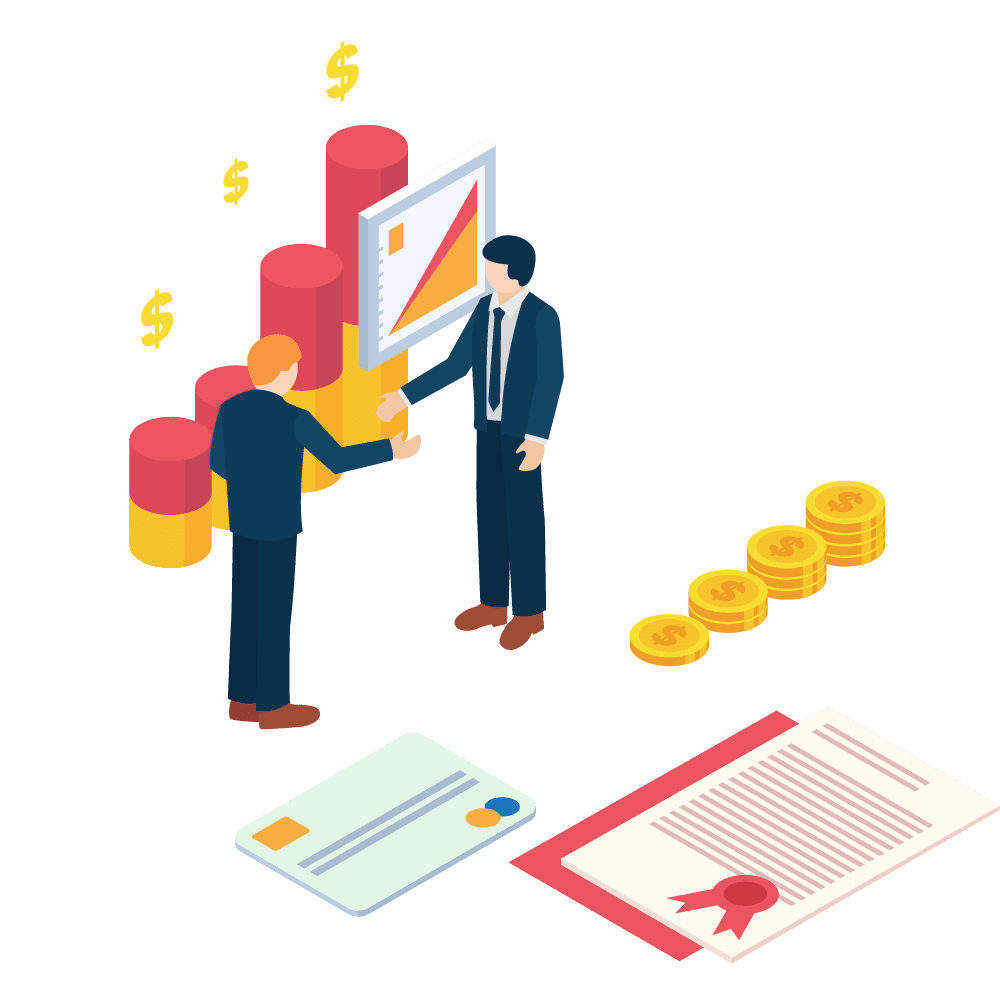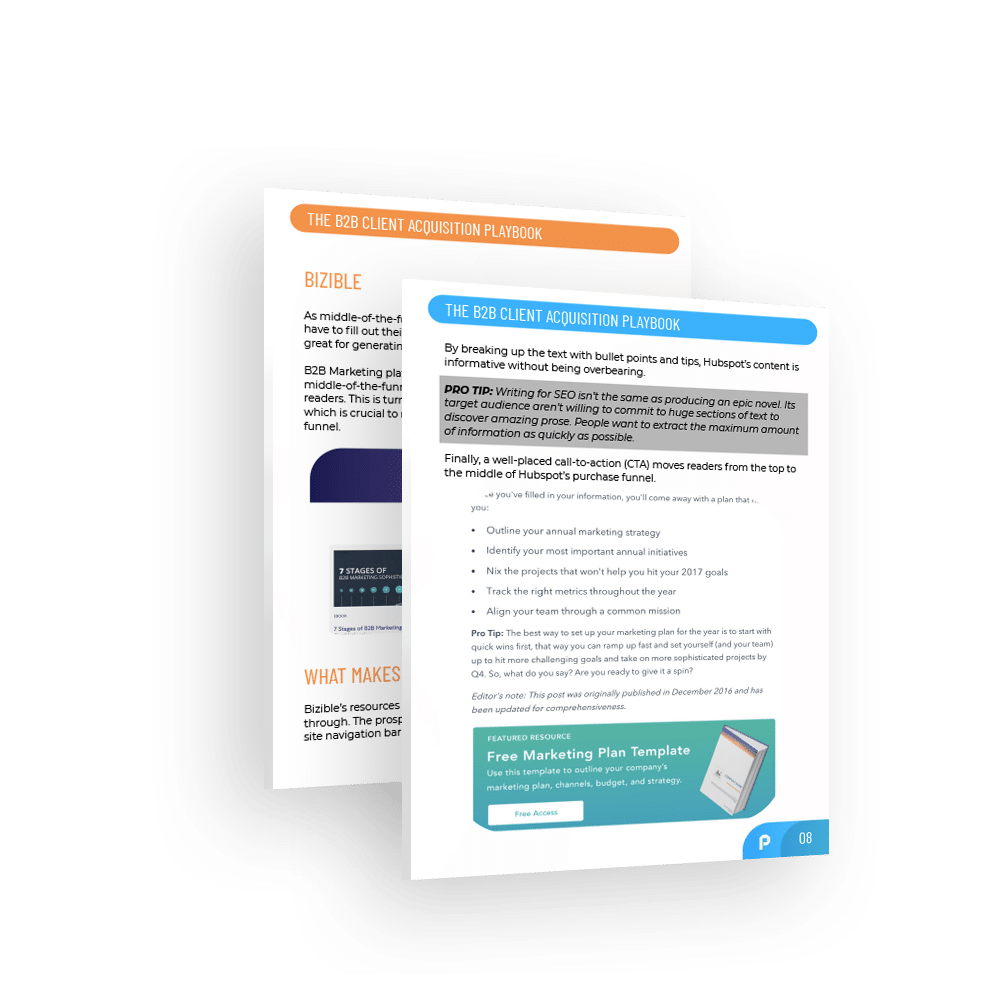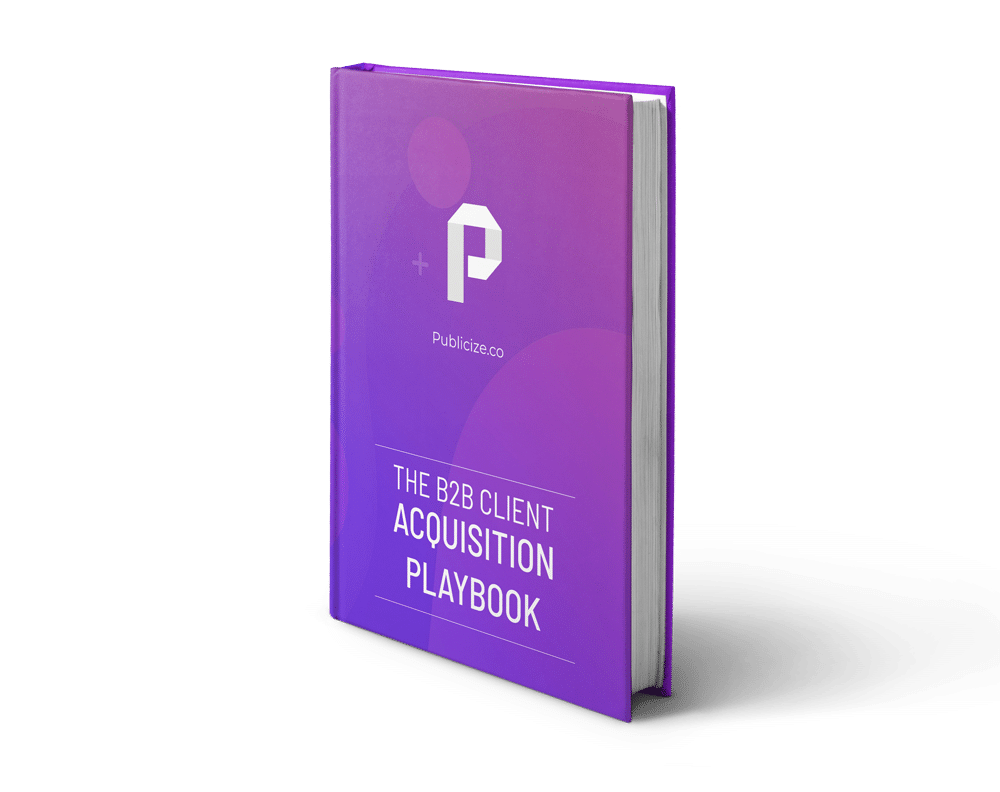Inbound marketing costs 61% less and generates twice the number of leads than its outbound marketing counterpart.
It’s statistics like these that highlight the importance of where and how you acquire clients. Whether your business depends on thousands of sales to survive, or one big contract for the year, your approach to how people journey towards your business to become a customer plays a key role.
Given the variety of business types, this journey changes depending on what objectives and structure your company has. Business to consumer (B2C) and consumer to consumer (C2C) businesses, generally speaking, have much shorter and streamlined client acquisition processes. Consumers learn about the company or individual and decide whether they want or need that particular product or service. It’s with business-to-business (B2B) organizations, however, where the effort to win new clients can become a long pursuit.
When we think about the digitization of business processes, the landscape of client acquisition has been flipped upside down. Gone are the days where your main customers see your business on a billboard and call you to schedule a meeting. Influencer marketing, guest articles, and online interviews all contribute to building brand awareness, user engagement and eventual conversion. And we haven’t even got started on SEO.
Whether you’re a new startup, or an established company, being savvy to industry changes and technological advancements keeps you in the loop with how best to push your target businesses into your purchase funnel.
But, let’s be honest here. The issue of client acquisition is an absolute monster of a topic. Knowing where to start with a client acquisition strategy that allows your marketing, sales and client service departments to come together seamlessly feels like an impossible feat.
So, how can you become a king of B2B client acquisition?
With some killer digital PR.
We’ve taken the time to go through the in’s and out’s of the client journey, how to make this ride as smooth as possible, and how digital PR can be your secret weapon to guiding people into the loving arms of your sales team.
In this guide, we cover:
- What client acquisition is
- How to build a purchase funnel
- What’s the sales process
- Why client retention is relevant
Let’s get started.
What’s B2B Client Acquisition?
B2B Client acquisition is the process a business goes through to reach prospects’ (other businesses’) attention, fostering their engagement, and converting them as clients. Those three stages are what we commonly know as the purchase funnel.
It’s common that the methods used to push people into and through the purchase funnel are misconceived as marketing methods. While marketing can be a useful tool for how you sell your product, a comprehensive digital PR strategy is what grows a business’ digital footprints, and proves its value and credibility.
We’ll get into this in more detail later on. For now, let’s look at how digital PR actually develops B2B client acquisition.
How Digital PR Fosters B2B Client Acquisition
To put it simply, a digital PR strategy is the foundation by which a business builds relationships with its target audience. Not only does it build brand awareness – it shapes how the public perceives and interacts with your business online.
How does this fit into B2B client acquisition?
Well, it informs every step of the process between someone noticing your company and that person converting as a customer.
Digital PR is the language that communicates the proof of trust, value and credibility to a business’ prospective clients, without ever explicitly saying those words. Good digital PR is done subtly, and ultimately convinces individuals to pay for one service over another, or buy one product over a similar alternative.
We’ll come back to this later.
Digital PR and the Purchase Funnel
A purchase funnel models the journey your prospect makes from having no affiliation with your brand to becoming a loyal customer. Part of digital PR’s job is to optimize this funnel and guide people through it as effectively as possible.
Generally speaking, there are 3 main stages of a B2B purchase funnel:
- Top Of The Funnel (TOFU)
- Middle Of The Funnel (MOFU)
- Bottom Of The Funnel (BOFU)
These three components use different digital PR tactics to push people from one stage of the funnel to the next. Additionally, the bottom funnel bridges into the sales process, the final step before signing a new customer.
Your purchase funnel is crucial to your business’ understanding of how you gained a prospect in the first place, and also acts as a key tool for organizing your entire digital PR strategy. If you use a purchase funnel to advise which digital PR tactics to use in a specific moment, your company already has the wireframe for how it acquires new business. Moreover, it highlights content or value gaps that could cause prospects to slip out of your funnel.
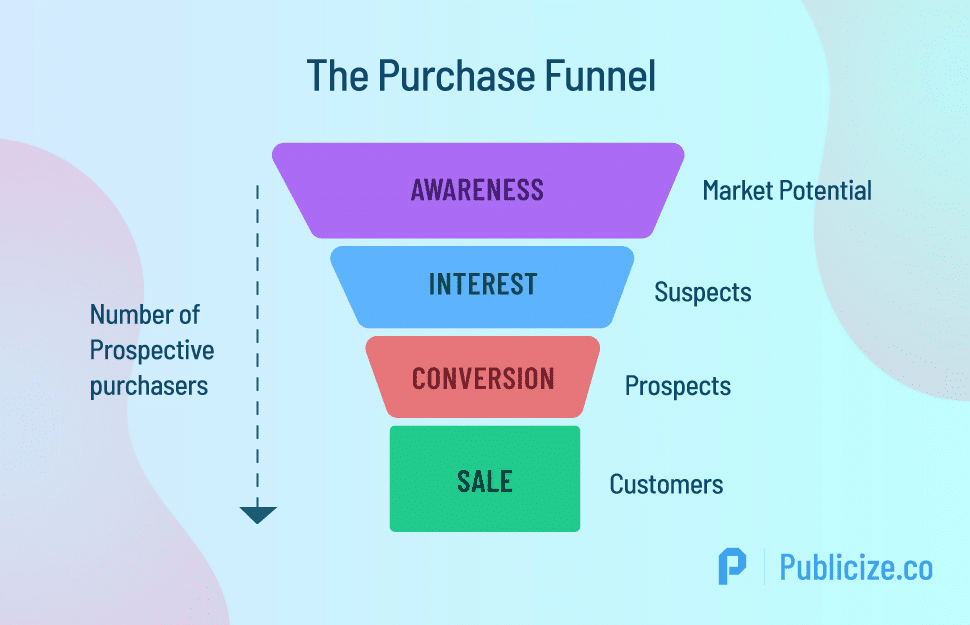
Online Channels To Be Aware Of
When building a client acquisition strategy, the best practice is to map out the different avenues to procure new business.
Primarily speaking, there are 5 main sources bringing in B2B clients online:
1) Content marketing
Content marketing involves producing quality in-house media. This can be anything from blogs, webinars, podcasts, white papers, or ebooks. Content marketing is vital to generating organic leads that can then be converted into clients by a sales representative. It also helps you communicate the value you can provide to prospects, and that you are truly a leader in your space.
2) Digital advertising
Digitally targeted ads are the perfect resource for generating new prospects. With some prudent keyword research, you can find out what your prospects are searching for online, and then bid on those words to appear on top of Google searches.
A thought-through digital ads campaign not only increases your business’ online exposure, but drives your target audience straight to your site, raising convertibility of the traffic coming onto the site.
3) Social Media
Social media helps form your brand image, and amplifies your company message across a range of platforms. Businesses are becoming increasingly reliant on using social media to interact with other businesses, sharing engaging content, and building community – including calling out good and bad customer experiences.
You need to be where your leads are. But know that every platform requires a distinct content strategy. Make sure to tailor your content accordingly, with the ultimate unifier being your brand voice.
4). Search Engine Optimization
Search engine optimization (SEO) is the bedrock of any successful business’ online presence. From the tippy top to the very bottom of the purchase funnel, SEO improves every single aspect of the content your business creates and shares.
If your site drives SEO to its full potential, you can generate a higher number of quality backlinks, which in turn increases your business’ site’s domain authority (DA) score. All this contributes to your site appearing higher in Google search results. The more time you invest in SEO, the greater the number of prospects you’ll have the chance to sell to.
5). Outbound lead generation
Finally, outbound lead generation can be a trickier task, given its direct nature. Outbound lead generation involves reaching out to people who best match your buyer persona, either now or in the future.
The trouble with outbound lead generation is that people are more likely to respond negatively. In fact, only 18% of marketers believe outbound practices provide high-quality leads. Unlike the art of seduction that digital PR is so well versed in, outbound marketing requires more aggressive tactics, making it harder to generate responses from prospects.
Nevertheless, when done in good taste, outbound prospecting can be an effective solution to bolstering leads and selling opportunities.
The Purchase Funnel
Awareness – Top of the funnel
Awareness sits right at the top of the funnel (TOFU). It’s the first step in client acquisition, and arguably the most important, as it’s usually prospects’ first impression of your business.
How does the top of the funnel contribute to client acquisition?
A comprehensive B2B client acquisition strategy that uses digital PR spreads brand awareness across all its online channels with a healthy mixture of paid, earned, shared, and owned media.
Good quality TOFU content will encourage site users and social media followers to engage with other pieces of your business’ content and brings them into the purchase funnel.
Notably, TOFU content shouldn’t be gated. Better said, prospects at this stage of the funnel won’t give their personal information to interact with what you’ve produced. Putting this type of content behind a wall with a call to action, or required email subscription, won’t aid your pursuit of acquiring new business.
Top of the funnel tactics
Here’s a range of popular TOFU tactics that are effective for enhancing the online awareness of your business.
- Blog posts
- Long-form guides
- Guest articles
- Infographics
- Social media posts
- In-house podcast
- Interviews
- Online events
How do you measure top of the funnel tactic success?
Measuring the return of investment on a TOFU tactic might seem redundant, as its links to client acquisition are indirect. Nonetheless, your business needs to know which tactic is worth doing.
TOFU metrics are good indicators of the number of qualified prospects your business will likely receive, and how people are responding to the content your business is putting out. Here are some of the key TOFU metrics you should analyze when considering the success of your tactics:
- Site reach – Reach gives you the horizon of your online presence. You can find reach in Google Analytics under Impressions, which tells you how many times the specific piece of site content has been viewed.
- Site traffic – You can find site traffic in Google Analytics under Sessions and Average Session Duration. Sessions is the raw number account for the amount of people who’ve visited your site and gone on a certain page. Average Session Duration gives you an average of how long people spend on your site. These metrics provide a basecamp for judging your site usage.
- Bounce rate – Your website’s bounce rate is the best tool for telling engagement with your site’s content. A bounce rate is the ratio of single-page sessions to multiple page sessions on your website. So, the lower the bounce rate, the more people who’ve gone on more than one page on your site, and engaged with your content. What constitutes a high bounce rate differs depending on the purpose of your site, but generally speaking, anything below 50% is really good.
- Social media engagement – Likes, shares, comments, and retweets all constitute engagement with your brand. Building social media followings for newcomer B2B businesses can be tough, so tactics like influencer marketing can come really handy for boosting your social media exposure.
- Digital ads click-through rate (CTR) – A CTR is the ratio between impressions and clicks on ads. Unlike site reach, less impressions on your ads can be a good thing – it tells you that you’re refining your ads targeting strategy and reaching the people that matter. A healthy CTA for a Google ad, for example, would be around 2%.
- Mentions in top tier publications – While at first glance it may not seem relevant, a mention in a top tier online publication like TechCrunch is a good qualitative indicator that your business is gaining notoriety from industry influencers, who your prospects will respect. It also gives you invaluable external validation – something that plays in the cards of every B2B startup!
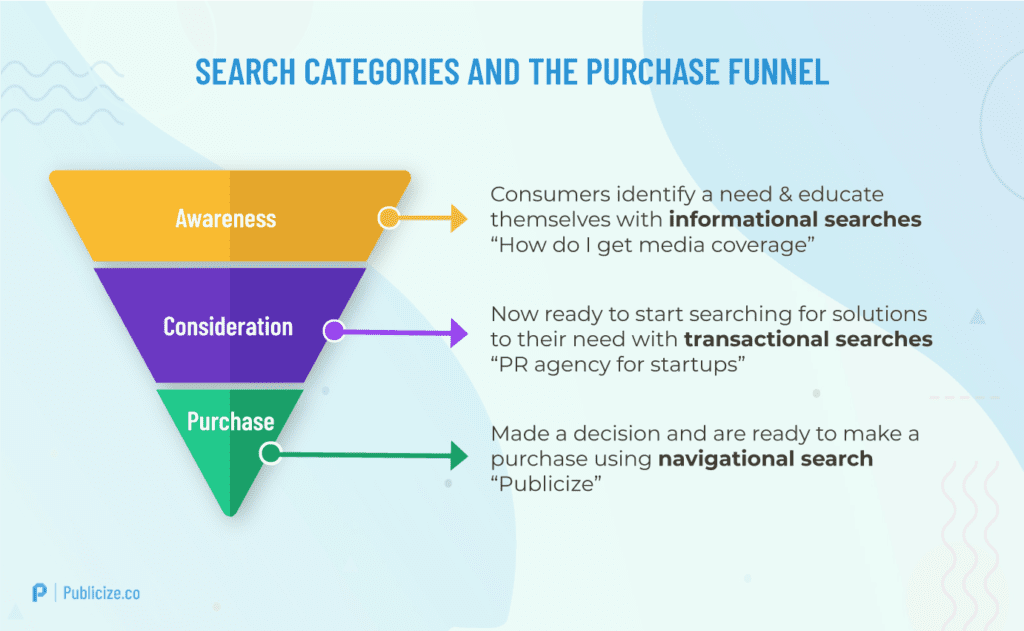
Interest – Middle of the funnel
Interest represents the middle of the funnel (MOFU) prospects. These people have begun to meaningfully engage with your brand, and have shown some level of engagement with your company’s product, service, or mission.
How does the middle of the funnel contribute to client acquisition?
MOFU is an important stage in B2B client acquisition, as not only is the content produced more transactional, it’s where you secure user’s information for your business’ prospect database.
Offering solutions to the pain points your prospect faces with their own company, in the form of a downloadable resource or email signup, allows you to effectively gather prospect data. With this information, you can warm these leads up by emailing them special offers, free resources, or cool events that they can attend. Remember, it’s all about giving value.
Middle of the funnel tactics
Here’s a range of popular MOFU tactics that are effective at generating leads in your prospect database:
- Downloadable resources (Ebooks, Databases)
- Newsletter signups
- Webinars
- Online Competitions
- White Papers
How do we measure the middle of the funnel tactic success?
- Conversions – Conversions are the name of the game when it comes to MOFU tactic success. For website conversions, you can find the number of conversions and conversion rate in Google Analytics. For social media, ads, and email campaigns, the CTR to these conversion pages on your site indicate their efficiency. Not sure how to find conversions in Google Analytics? No problem, you can find out how to set up goals in Google Analytics in our Client Acquisition Toolkit.
- Bounce Rate – Bounce rate is a good indicator to see if prospects have enough interest in a gated piece of content to give out their details. If they’re more likely to bounce than convert on a particular page, this tells you whatever you’re offering isn’t of sufficient value to your prospects.
Conversion – Bottom of the funnel
Conversion represents the bottom of the funnel (BOFU), where your prospect is now ready to take the plunge and (hopefully) become a client. These prospects are warm, and are ready to consider doing business with your company.
How does the bottom of the funnel contribute to client acquisition?
As the name suggests, the conversion stage (BOFU) is the beginning of the finish line before acquiring new business.
At this point, you’ve demonstrated elements of your company’s credibility, but now you need to foster trust and value. If the prospect sees both of these in your product, and a bit of why you’re better than your competitors, they’ll be ready to talk about doing business.
Bottom of the funnel tactics
Here are some BOFU tactics that are great for converting prospects in your database into sellable opportunities.
- Email Funnels
- Sales promotions
- Case studies and testimonials
- Video walk-through of the customer journey
How do I measure bottom of the funnel tactic success?
- Sales Call Conversions – People that convert on your website, email, or digital ads to signup for a sales call are key indicators of which circumstances a prospect is likely to listen to a sales pitch.
- Number of successful calls – Successful sales calls doesn’t necessarily constitute client acquisition. It’s an indicator if prospects are qualified or not. If people don’t show up for the call, and ignore any follow up emails you send them, there was never the opportunity to sell in the first place.
The Sales Process
The sales process is an extension of the purchase funnel. The timeline for sales is typically much shorter than when generating organic leads through a digital PR strategy. Yet, there are some important things to consider before, during, and after speaking to prospects.
The sale hasn’t been made yet, and without the sales process, client acquisition doesn’t exist.
Pre-sale preparation
- Identify sales arguments
This is the first step to organizing you and your sales team before pitching your product or service to a prospect. It’s also a unique opportunity to both present yourself and get a better understanding of your prospect’s needs.
Clearly layout – in a presentation or in writing – what makes your product special, and how it is an integral piece to improving a business’ way of working.
After this, consider how you’re going to adapt the product’s function to suit the needs of the prospect.
To maintain control of the sales call, prepare some questions which have positive answers and keep the conversation steered in the right direction. Remember, this is not about overwhelming your prospects – so make sure to listen too.
2. Know the difference between MQL & SQL
The differences between a marketing qualified lead (MQL) and a sales qualified lead (SQL) are fairly simple. A MQL is a prospect that’s willing to give their personal information to your business, and therefore, has a developed interest in your business. However this prospect is not yet ready to enter the buying process. Those people are SQLs.
Why does this distinction matter?
It’s important to gauge whether prospects preparing to have a call with your sales team have any chance of converting into new business. If you have a high volume of unsuccessful calls, this is mostly explained by MQLs mistakenly signing up for sales calls. If that happens, take a step back to reintegrate them into the right stage of the purchase funnel. Chances are, they will still need some nurturing first.
3. Research your prospect
Researching your prospect prior to speaking with them gives you the best chance of understanding their business’ situation, potential issues that they may be having, and how your business can solve those issues.
Additionally, researching your prospect allows you to prepare responses to doubts or objections that may get raised during the call. In many cases, this is the way a wavering prospect is convinced to sign up for a product or contract.
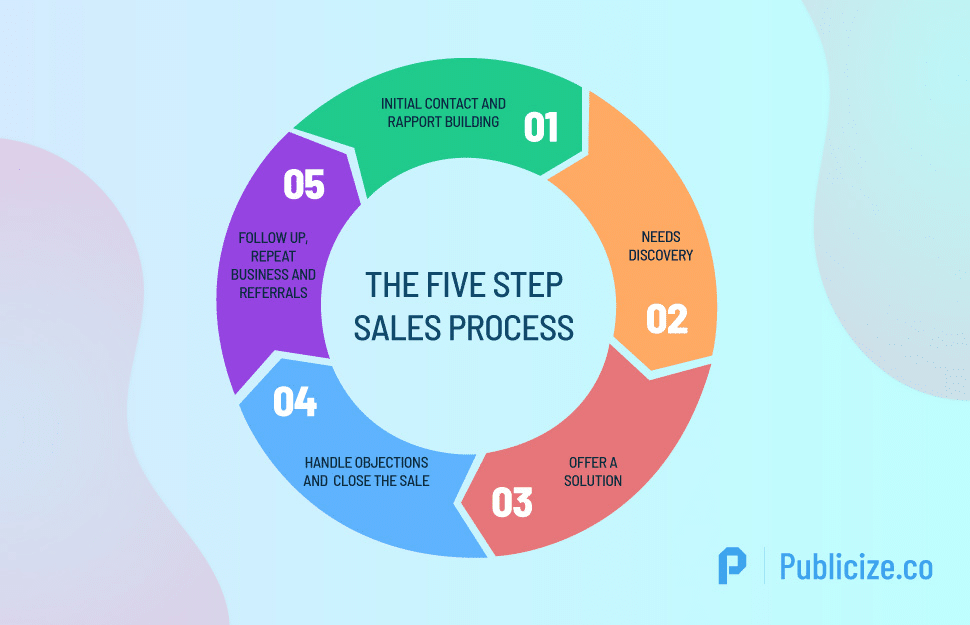
The Sale
When it comes to the art of the pitch, you need to prove trust and value at each stage. There are four fundamental components to a successful sales call.
Sales representative – A quality sales representative knows how to retain a prospect’s interest in your business’ product. They not only demonstrate knowledge of their own product but the prospect’s industry, remain professionally persistent to close the sale, and are great at building connections.
It’s often the case that the sales representative, and not the product itself, pushes the prospect to become a client. This explains why almost $1 trillion is spent on sales teams every year.
Knowledge of Company – With a good sales representative, you can demonstrate to your prospective client that you care about their company. This goes back to researching your prospect, and shows you’ve taken the time to get to know what their business is all about.
If you fail to look into your prospect’s line of work, they’ll see straight through any attempt to feign knowledge of their product or service, and immediately lose interest in doing business with you. Prospects want to know that if they become your client, they’ll be treated with outstanding service. Not doing your homework can look unprofessional and cost you sales.
Knowledge of Industry – If you establish a good awareness of your prospect’s business, the next step to converting them as a customer is to demonstrate your knowledge of their industry. Highlighting useful insights about specific challenges to companies in your prospect’s industry, and how your product or service can overcome them, is an effective way to get their attention.
The product or package – Finally, your prospect has to be won over by the quality and value of your product or service. It’s likely that at this point, you’ll get some objections about how a competitor’s product is cheaper or has extra features that yours doesn’t.
Stay cool.
If you know your product well, you can control the narrative by bringing it back to how your product directly addresses the prospect’s pain points, and guiding them through how you can facilitate the solution better than the rest.
A Word On Client Retention
I know. This guide’s all about client acquisition. Client retention’s a whole other ballgame right?
Well, sort of. Client retention is the next step in the journey once you’ve signed new business. And it’s certainly not an insignificant one. In fact, it’s 5 times cheaper to retain an existing client than it is to sign a new one. It follows, therefore, that the relationship you build with those prospects who become clients must be on sure-footing before handing them off to an account manager.
As a business, you want your clients to remain your clients for as long as possible, while building on this with new business. It’s important that when striving to do both these activities, you don’t neglect one for the other. Remember also, that effective client retention can lead to more prospects from a client’s recommendation.
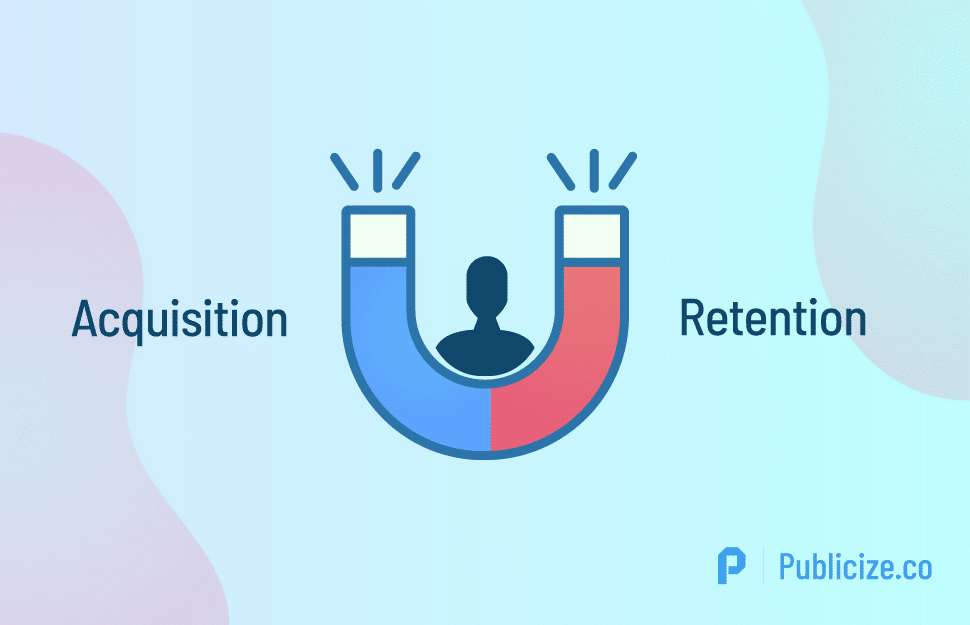
Summing Up
62% of B2B buyers make their purchase decisions based solely on digital content.Even though B2B client acquisition can feel like a laborious process, statistics like this highlight how digital PR is pivotal to gaining new business.
Client acquisition is the beating heart of any B2B company. The process of acquiring customers though, is not just about winning the business of any old company. The true worth of a quality client acquisition strategy lies in the number of good customers you can attract, who stay loyal and even advocate for you to their partners.
Don’t think of client acquisition as a one-way stream. Think of it as a cycle that constantly generates bigger and better clients, growing your business to new heights. Give your clients the tools to succeed with an awesome product, and prove this with some effective PR, and they’ll be sure to repay you the favor.




